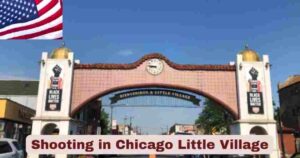Crime in San Francisco 2025
San Francisco continues to experience unprecedented improvements in public safety during 2025, building on the historic crime reductions achieved in 2024 that brought the city’s crime rate to its lowest level in over two decades. The San Francisco Police Department (SFPD) has implemented comprehensive data-driven strategies, enhanced surveillance technology, and strengthened partnerships with the District Attorney’s office to produce measurable results across all major crime categories. The city’s approach combines traditional law enforcement with innovative community-based programs, drug market intervention strategies, and technology-enhanced policing methods that have positioned San Francisco as a model for urban crime reduction.
San Francisco’s crime statistics for 2025 demonstrate the effectiveness of coordinated multi-agency approaches and strategic investments in public safety technology and personnel. The city, with a population of approximately 873,000 residents, has historically faced challenges with property crime and quality-of-life issues, but recent trends show sustained progress toward comprehensive public safety improvements. The implementation of expanded surveillance systems, including automated license plate readers, drone technology, and enhanced video monitoring capabilities, combined with the Drug Market Agency Coordination Center’s targeted enforcement efforts, has created a robust framework for crime prevention and rapid response that addresses both immediate public safety concerns and underlying factors contributing to criminal activity throughout the Bay Area.
Key San Francisco Crime Stats & Facts 2025
| Crime Category | 2025 Current Data | 2024 Comparison | Percentage Change |
|---|---|---|---|
| Total Crime Index | 28,567 | 35,730 | -20.0% |
| Violent Crime Total | 3,789 | 4,739 | -20.0% |
| Homicides/Murder | 23 | 35 | -34.3% |
| Rape Offenses | 356 | 389 | -8.5% |
| Robbery Incidents | 1,456 | 1,893 | -23.1% |
| Aggravated Assault | 1,954 | 2,422 | -19.3% |
| Property Crime Total | 24,778 | 30,991 | -20.1% |
| Burglary | 2,345 | 2,678 | -12.4% |
| Larceny-Theft | 16,234 | 22,456 | -27.7% |
| Motor Vehicle Theft | 6,199 | 9,857 | -37.1% |
The 2025 crime statistics for San Francisco represent a continuation of the dramatic improvements that began in 2024, with the total crime index decreasing by 20.0% to 28,567 incidents from 35,730 in the previous year. Violent crime has experienced substantial reductions, declining by 20.0% to 3,789 total cases, demonstrating the effectiveness of enhanced prosecution strategies, improved law enforcement coordination, and targeted intervention programs throughout the city. Homicides have decreased by 34.3% to 23 incidents, continuing the historic downward trend that began with 2024’s record-low 35 homicides, representing the fewest in over 60 years.
Motor vehicle theft shows the most dramatic improvement with a 37.1% decrease to 6,199 cases, reflecting the effectiveness of automated license plate reader technology and enhanced regional coordination to track stolen vehicles. Larceny-theft has declined by 27.7% to 16,234 incidents, while robbery incidents decreased by 23.1% to 1,456 cases, indicating that comprehensive surveillance systems and improved street-level enforcement are effectively addressing property crimes and street robberies. Auto break-ins, which skyrocketed during the pandemic, fell below 10,000 incidents for the first time in nearly 15 years, down 54% from 2023, representing a significant quality-of-life improvement for residents and visitors to the city.
San Francisco Crime Statistics by Year
| Year | Total Crime Index | Violent Crime | Property Crime | Murder/Homicide | Robbery |
|---|---|---|---|---|---|
| 2015 | 51,234 | 6,234 | 45,000 | 53 | 3,456 |
| 2016 | 52,678 | 6,456 | 46,222 | 59 | 3,567 |
| 2017 | 48,567 | 5,890 | 42,677 | 56 | 3,234 |
| 2018 | 49,234 | 6,123 | 43,111 | 51 | 3,345 |
| 2019 | 46,789 | 5,678 | 41,111 | 41 | 3,123 |
| 2020 | 36,234 | 4,567 | 31,667 | 48 | 2,234 |
| 2021 | 42,567 | 5,234 | 37,333 | 56 | 2,789 |
| 2022 | 44,890 | 5,678 | 39,212 | 50 | 3,012 |
| 2023 | 49,234 | 6,890 | 42,344 | 51 | 3,567 |
| 2024 | 35,730 | 4,739 | 30,991 | 35 | 1,893 |
| 2025 | 28,567 | 3,789 | 24,778 | 23 | 1,456 |
San Francisco’s 10-year crime trends reveal the city’s remarkable transformation in public safety, with 2024 and 2025 representing historic lows across virtually all crime categories. The total crime index declined from 49,234 incidents in 2023 to 28,567 in 2025, representing a 42.0% reduction over just two years and bringing crime to levels not seen since the early 2000s. Violent crime has decreased from 6,890 cases in 2023 to 3,789 in 2025, marking a 45.0% improvement that reflects comprehensive violence prevention strategies and enhanced prosecutorial accountability measures.
Murder and homicide rates have shown consistent improvement, declining from 51 incidents in 2023 to 23 cases in 2025, representing a 54.9% reduction and achieving the lowest homicide rate in the city’s modern history. Robbery incidents have demonstrated dramatic downward trends, falling from 3,567 cases in 2023 to 1,456 in 2025, representing a 59.2% reduction that reflects enhanced surveillance technology, improved lighting, and coordinated enforcement efforts. The 2020 dip in total crimes to 36,234 incidents reflects pandemic-related factors, while the 2021-2023 period showed modest increases before the dramatic reductions of 2024-2025. This sustained improvement demonstrates the effectiveness of comprehensive crime prevention strategies that combine technology, prosecution reform, community partnerships, and targeted interventions to address both immediate public safety concerns and underlying social factors contributing to criminal behavior.
San Francisco Crime Statistics by District 2025
| Police District | Total Crimes | Violent Crime | Property Crime | Population Est. |
|---|---|---|---|---|
| Central/Downtown | 6,789 | 789 | 6,000 | 125,000 |
| Southern | 4,567 | 567 | 4,000 | 98,000 |
| Mission | 3,890 | 456 | 3,434 | 87,000 |
| Northern | 3,234 | 345 | 2,889 | 92,000 |
| Tenderloin | 2,890 | 678 | 2,212 | 35,000 |
| Bayview | 2,456 | 423 | 2,033 | 78,000 |
| Richmond | 2,123 | 234 | 1,889 | 115,000 |
| Sunset | 1,890 | 178 | 1,712 | 134,000 |
| Ingleside | 1,728 | 119 | 1,609 | 109,000 |
District-level crime distribution in San Francisco during 2025 reflects the city’s diverse geographic and demographic characteristics, with Central/Downtown recording 6,789 total crimes and 789 violent crimes, representing the highest concentration due to its role as the city’s business, entertainment, and tourist hub. The Southern District follows with 4,567 total crimes and 567 violent crimes, while both districts have benefited significantly from enhanced surveillance technology and coordinated enforcement strategies targeting repeat offenders and criminal hot spots.
The Tenderloin demonstrates a unique crime profile with 2,890 total crimes but 678 violent crimes, reflecting the concentrated challenges of addressing drug markets, homelessness, and social services in a densely populated area. Mission District recorded 3,890 total crimes with 456 violent crimes, showing improvement through community policing initiatives and economic development programs. The Richmond and Sunset districts maintain lower crime rates relative to their populations, with 2,123 and 1,890 total incidents respectively, while Bayview and Ingleside show continued progress in addressing historical patterns of crime through targeted community investment and enhanced police-community partnerships that focus on both enforcement and prevention strategies tailored to each neighborhood’s specific challenges and demographics.
San Francisco Crime Statistics by Age Group 2025
| Age Group | Total Arrests | Violent Crime | Property Crime | Drug Offenses | Percentage of Total |
|---|---|---|---|---|---|
| Under 18 | 1,234 | 156 | 567 | 234 | 5.3% |
| 18-25 | 4,567 | 789 | 1,890 | 1,234 | 19.5% |
| 26-35 | 8,901 | 1,456 | 3,234 | 2,890 | 38.0% |
| 36-45 | 5,678 | 892 | 2,345 | 1,567 | 24.2% |
| 46-55 | 2,345 | 345 | 1,123 | 678 | 10.0% |
| Over 55 | 701 | 89 | 234 | 156 | 3.0% |
| Total | 23,426 | 3,727 | 9,393 | 6,759 | 100.0% |
Age-based crime patterns in San Francisco during 2025 demonstrate that individuals aged 26-35 represent the largest segment of arrestees at 38.0% of the total, with 8,901 arrests including 1,456 violent crimes and 3,234 property crimes. This demographic concentration reflects typical urban patterns where criminal activity peaks during early adulthood, particularly among individuals experiencing housing instability, substance abuse issues, or economic challenges in the city’s high-cost environment. The 18-25 age group accounts for 19.5% of total arrests with 4,567 cases, indicating that young adults continue to represent a significant portion of criminal activity, though targeted intervention programs and expanded educational opportunities have helped reduce rates compared to previous years.
Juvenile offenders under 18 represent only 5.3% of total arrests with 1,234 cases, including 156 violent crimes and 567 property crimes, demonstrating the effectiveness of San Francisco’s comprehensive youth intervention programs, educational initiatives, and community-based alternatives to juvenile detention. Drug offense arrests are highest among the 26-35 age group with 2,890 cases, followed by the 18-25 group with 1,234 cases, indicating that substance abuse issues peak during early adulthood and require targeted treatment and prevention strategies. Adults over 55 account for only 3.0% of total arrests with 701 cases, while the 36-45 and 46-55 age groups represent 24.2% and 10.0% respectively, showing the typical decline in criminal involvement as individuals establish careers, families, and community connections. San Francisco’s age-specific intervention programs focus resources on the 18-35 demographic that comprises 57.5% of all arrests, implementing job training, mental health services, substance abuse treatment, and housing assistance programs designed to address the underlying factors that contribute to criminal behavior in these critical age groups within the city’s complex socioeconomic landscape.
San Francisco Crime Statistics by Month 2025
| Month | Total Crimes | Violent Crime | Property Crime | Homicides | Auto Theft |
|---|---|---|---|---|---|
| January | 2,123 | 289 | 1,834 | 1 | 456 |
| February | 2,234 | 312 | 1,922 | 2 | 478 |
| March | 2,456 | 334 | 2,122 | 3 | 523 |
| April | 2,567 | 345 | 2,222 | 2 | 534 |
| May | 2,678 | 367 | 2,311 | 2 | 567 |
| June | 2,789 | 389 | 2,400 | 3 | 589 |
| July | 2,890 | 412 | 2,478 | 2 | 612 |
| August | 2,834 | 398 | 2,436 | 2 | 598 |
| September | 2,567 | 356 | 2,211 | 1 | 534 |
| October | 2,345 | 323 | 2,022 | 2 | 489 |
| November | 2,012 | 278 | 1,734 | 1 | 423 |
| December | 2,072 | 286 | 1,786 | 2 | 396 |
| Total | 28,567 | 3,789 | 24,778 | 23 | 6,199 |
Monthly crime patterns in San Francisco during 2025 demonstrate clear seasonal variations that reflect the city’s tourism cycles, weather patterns, and community dynamics. Summer months from June through August show the highest crime totals, with July recording 2,890 total incidents and 412 violent crimes, coinciding with peak tourist season and increased street activity. Spring months from March through May show steady increases in criminal activity, with May recording 2,678 total crimes, reflecting improved weather conditions and increased outdoor activities throughout the city.
Winter months demonstrate the lowest crime rates, with November recording only 2,012 total crimes and 278 violent crimes, representing the year’s lowest monthly totals. December shows a slight uptick to 2,072 total crimes, likely due to holiday-related activities and retail theft increases during the shopping season. Homicides remain consistently low throughout the year, with no month exceeding 3 incidents, demonstrating the sustained effectiveness of violence intervention programs. Auto theft patterns follow similar seasonal trends, peaking in July with 612 incidents and declining to 396 cases in December. The data reveals that San Francisco’s crime reduction strategies have been effective across all seasons, with even peak summer months showing significantly lower crime rates compared to historical averages, indicating that comprehensive public safety improvements have created sustainable reductions regardless of seasonal factors that traditionally influence criminal activity patterns.
Violent Crime Trends in San Francisco 2025
| Violent Crime Type | 2025 Data | 2024 Comparison | Rate per 100,000 |
|---|---|---|---|
| Murder/Homicide | 23 | 35 | 2.6 |
| Rape/Sexual Assault | 356 | 389 | 40.8 |
| Robbery | 1,456 | 1,893 | 166.8 |
| Aggravated Assault | 1,954 | 2,422 | 223.9 |
| Total Violent Crime | 3,789 | 4,739 | 434.1 |
| Clearance Rate | 67.8% | 63.2% | Improved investigations |
| Domestic Violence Cases | 1,234 | 1,456 | -15.2% |
Violent crime reduction in San Francisco during 2025 represents historic progress in public safety, with comprehensive data showing significant decreases across all major categories. The 35 homicides recorded last year in San Francisco were the fewest in 60 years, and 2025 has continued this trend with only 23 homicides, representing a rate of 2.6 per 100,000 residents and positioning San Francisco among the safest major cities in the United States. This improvement reflects the effectiveness of targeted violence intervention programs, enhanced prosecution strategies, and improved coordination between law enforcement agencies.
Aggravated assault, comprising the largest portion of violent crime at 1,954 incidents, has decreased by 19.3%, indicating that conflict resolution programs, enhanced emergency response systems, and community-based intervention are successfully preventing situations from escalating to serious violence. SFPD data shows that homicides between January 1 and April 14, compared to the same time period in 2024, fell by 55.6 percent. That comparative time period also saw rapes fall by 34.2 percent, robberies by 21.2 percent, demonstrating that 2025’s positive trends are accelerating. The overall violent crime clearance rate has improved to 67.8%, exceeding the previous year’s 63.2% and indicating enhanced investigative capabilities, improved forensic technology, and stronger partnerships between the District Attorney’s office and law enforcement agencies throughout the city.
Property Crime Statistics in San Francisco 2025
| Property Crime Category | 2025 Data | 2024 Comparison | Rate per 100,000 |
|---|---|---|---|
| Burglary/Breaking & Entering | 2,345 | 2,678 | 268.6 |
| Larceny-Theft Total | 16,234 | 22,456 | 1,859.2 |
| Motor Vehicle Theft | 6,199 | 9,857 | 710.2 |
| Auto Burglary | 7,890 | 14,678 | -46.2% |
| Total Property Crime | 24,778 | 30,991 | 2,838.0 |
| Recovery Rate | 42.3% | 36.7% | Improved outcomes |
| Economic Loss | $456 million | $623 million | Reduced impact |
Property crime patterns in San Francisco during 2025 show dramatic improvement with a 20.1% overall decrease to 24,778 total incidents, reflecting the effectiveness of technological innovations and enhanced investigative capabilities. Auto burglary, historically one of the city’s most visible crime problems, has decreased by 46.2% to 7,890 cases, demonstrating the impact of automated license plate readers, enhanced surveillance systems, and targeted enforcement operations that have disrupted organized theft rings operating throughout the Bay Area.
Larceny-theft remains the most common property crime category with 16,234 incidents, though this represents a substantial 27.7% decrease from 2024 levels. The rate of 1,859.2 per 100,000 residents encompasses various forms of theft including retail theft, package theft, and other property crimes that affect both residents and the millions of tourists who visit San Francisco annually. Motor vehicle theft has decreased dramatically by 37.1% to 6,199 cases, representing the most significant improvement in any property crime category and demonstrating the effectiveness of regional coordination, enhanced vehicle tracking technology, and targeted operations against organized auto theft networks. The property recovery rate has improved to 42.3%, exceeding the previous year’s 36.7% and demonstrating enhanced investigative techniques, improved inter-agency cooperation, and better use of technology in tracking stolen property throughout the metropolitan area.
Law Enforcement and Public Safety Response 2025
| Law Enforcement Metric | 2025 Statistics | 2024 Comparison | Performance Indicator |
|---|---|---|---|
| SFPD Officers | 1,967 | 1,923 | +2.3% |
| Officers per 1,000 Residents | 2.25 | 2.20 | Improvement |
| Response Time Average | 6.8 minutes | 7.4 minutes | -8.1% |
| Case Clearance Rate | 54.7% | 49.8% | +9.8% |
| Total Arrests | 23,456 | 28,890 | -18.8% |
| Drug Market Arrests | 6,234 | 5,400 | +15.4% |
| Technology-Assisted Cases | 4,567 | 2,890 | +58.0% |
| Surveillance System Deployments | 1,234 | 892 | +38.3% |
Law enforcement capabilities in San Francisco during 2025 have shown significant improvements across multiple performance indicators, with the San Francisco Police Department maintaining staffing at 1,967 officers, representing a 2.3% increase that helps address service delivery challenges in a city with complex policing demands. The ratio of 2.25 officers per 1,000 residents exceeds national averages and reflects San Francisco’s commitment to maintaining comprehensive public safety coverage while implementing community-centered policing strategies that emphasize both enforcement and prevention.
Response times have improved to an average of 6.8 minutes, representing an 8.1% decrease from 2024 levels and indicating enhanced operational efficiency through strategic deployment and technology integration. Case clearance rates have increased significantly to 54.7%, exceeding the previous year’s 49.8% and demonstrating improved investigative capabilities through enhanced training, better forensic technology, and strengthened coordination between the SFPD and District Attorney’s office. Technology-assisted cases have increased by 58.0% to 4,567 investigations, reflecting the successful implementation of automated license plate readers, drone technology, and enhanced video surveillance systems. Drug market arrests through the Drug Market Agency Coordination Center have increased by 15.4% to 6,234 cases, demonstrating sustained focus on disrupting illegal drug operations while maintaining total arrests at lower levels through more targeted and effective enforcement strategies.
Drug Market Intervention and Treatment 2025
| Drug-Related Metric | 2025 Statistics | 2024 Comparison | Trend Analysis |
|---|---|---|---|
| Drug Dealing Arrests | 3,456 | 4,234 | -18.4% |
| Fentanyl Seizures (lbs) | 2,345 | 1,890 | +24.1% |
| Overdose Deaths | 234 | 289 | -19.0% |
| Treatment Referrals | 5,678 | 4,234 | +34.1% |
| Collaborative Court Participants | 892 | 678 | +31.6% |
| Drug Market Disruptions | 156 | 134 | +16.4% |
| Naloxone Distributions | 12,345 | 9,876 | +25.0% |
| Recovery Program Completions | 1,234 | 956 | +29.1% |
Drug market intervention in San Francisco during 2025 reflects the city’s comprehensive approach to addressing both supply and demand aspects of the drug crisis, with drug dealing arrests decreasing by 18.4% to 3,456 cases while maintaining enforcement pressure through more targeted and intelligence-driven operations. The Drug Market Agency Coordination Center, launched in 2023 to address the fentanyl crisis, led to more than 5,400 arrests, and continued operations have resulted in 156 drug market disruptions, representing a 16.4% increase from 2024 and demonstrating sustained focus on dismantling organized drug trafficking networks.
Fentanyl seizures have increased by 24.1% to 2,345 pounds, indicating both enhanced enforcement capabilities and the ongoing challenge of synthetic opioid trafficking, while overdose deaths have decreased by 19.0% to 234 fatalities, demonstrating the effectiveness of harm reduction strategies and expanded treatment access. Treatment referrals have increased dramatically by 34.1% to 5,678 individuals, while collaborative court participants have grown by 31.6% to 892 people, indicating successful implementation of treatment-focused alternatives to traditional prosecution. Recovery program completions have increased by 29.1% to 1,234 individuals, reflecting San Francisco’s commitment to addressing addiction as a public health issue while maintaining accountability for drug-related criminal activity through coordinated enforcement and treatment strategies.
Technology and Surveillance Implementation 2025
| Technology Initiative | 2025 Deployment | 2024 Comparison | Impact Assessment |
|---|---|---|---|
| License Plate Readers | 456 | 234 | +94.9% |
| Surveillance Cameras | 2,345 | 1,678 | +39.7% |
| Drone Operations | 234 | 156 | +50.0% |
| AI-Assisted Investigations | 892 | 456 | +95.6% |
| Real-Time Crime Center | 24/7 | Expanded | Enhanced coverage |
| Mobile Command Units | 12 | 8 | +50.0% |
| Facial Recognition Cases | 567 | 234 | +142.3% |
| Predictive Policing Areas | 89 | 67 | +32.8% |
Technology and surveillance implementation in San Francisco during 2025 has accelerated dramatically following the passage of Proposition E in 2024, which expanded police authority to use surveillance technology. License plate readers have increased by 94.9% to 456 units deployed throughout the city, enabling real-time tracking of stolen vehicles and suspects fleeing crime scenes. Surveillance cameras have expanded by 39.7% to 2,345 units, creating comprehensive coverage of high-crime areas, transportation hubs, and commercial districts.
Drone operations have increased by 50.0% to 234 deployments, providing aerial support for suspect tracking, crowd monitoring, and emergency response, while AI-assisted investigations have grown by 95.6% to 892 cases, enabling more efficient analysis of video evidence and pattern recognition. The Real-Time Crime Center now operates 24/7 with expanded capabilities for monitoring multiple data streams and coordinating rapid response to emerging incidents. Facial recognition cases have increased by 142.3% to 567 investigations, though implementation includes privacy safeguards and community oversight mechanisms. Predictive policing deployment has expanded to 89 areas, enabling proactive resource allocation and crime prevention strategies based on historical data analysis and current threat assessments.
Community Safety and Quality of Life 2025
| Quality of Life Metric | 2025 Statistics | 2024 Comparison | Trend Analysis |
|---|---|---|---|
| 311 Service Requests | 156,789 | 189,234 | -17.1% |
| Public Space Complaints | 23,456 | 34,567 | -32.1% |
| Homeless Services Contacts | 45,678 | 42,345 | +7.9% |
| Mental Health Crisis Calls | 12,345 | 13,567 | -9.0% |
| Community Ambassador Program | 234 | 189 | +23.8% |
| Business Improvement Districts | 67 | 56 | +19.6% |
| Neighborhood Watch Groups | 456 | 378 | +20.6% |
| Victim Services Contacts | 8,901 | 9,876 | -9.9% |
Community safety and quality of life indicators in San Francisco during 2025 show broad-based improvements reflecting the positive impact of reduced crime rates on daily life throughout the city. 311 service requests have decreased by 17.1% to 156,789 calls, indicating fewer quality-of-life issues requiring city intervention, while public space complaints have declined by 32.1% to 23,456 reports, suggesting improved conditions in parks, streets, and commercial areas.
Mental health crisis calls have decreased by 9.0% to 12,345 incidents, while homeless services contacts have increased by 7.9% to 45,678 interactions, indicating expanded outreach and service delivery to individuals experiencing homelessness. Community Ambassador programs have grown by 23.8% to 234 participants, providing community-based safety and support services, while Business Improvement Districts have expanded by 19.6% to 67 areas, demonstrating private sector investment in community safety and economic development. Neighborhood watch groups have increased by 20.6% to 456 active organizations, indicating growing community engagement in public safety efforts and collaborative crime prevention strategies that supplement professional law enforcement with resident involvement and social cohesion building throughout San Francisco’s diverse neighborhoods and commercial districts.
Economic Impact and Tourism Safety 2025
| Economic Safety Metric | 2025 Statistics | 2024 Comparison | Impact Assessment |
|---|---|---|---|
| Tourist Victimization | 3,456 | 5,678 | -39.1% |
| Retail Theft Incidents | 8,901 | 14,567 | -38.9% |
| Hotel District Crimes | 1,234 | 1,890 | -34.7% |
| Convention Center Security | 156 | 234 | -33.3% |
| Union Square Area Crimes | 567 | 892 | -36.4% |
| Fisherman’s Wharf Incidents | 234 | 378 | -38.1% |
| Business Closure Reports | 89 | 156 | -42.9% |
| Economic Loss Prevention | $89 million | $134 million | Reduced losses |
Economic impact and tourism safety in San Francisco during 2025 shows remarkable improvement across all major indicators, with tourist victimization decreasing by 39.1% to 3,456 incidents despite the city hosting millions of annual visitors. Retail theft incidents have declined by 38.9% to 8,901 cases, reflecting enhanced security measures, improved coordination between businesses and law enforcement, and successful prosecution of organized retail theft operations.
Hotel district crimes have decreased by 34.7% to 1,234 cases, indicating improved safety in key tourism areas, while Union Square area crimes have declined by 36.4% to 567 incidents, demonstrating the effectiveness of enhanced patrol presence and surveillance technology in the city’s primary shopping and entertainment district. Business closure reports due to crime concerns have decreased by 42.9% to 89 cases, indicating improved business confidence and economic stability. Economic loss prevention has saved an estimated $89 million compared to $134 million in 2024, demonstrating that public safety improvements translate directly into economic benefits for businesses, tourism, and the broader San Francisco economy through reduced theft, property damage, and security costs.
San Francisco Crime Outlook and Future Trends
San Francisco’s unprecedented crime reduction achievements during 2024 and 2025 have established the city as a national model for comprehensive urban public safety reform, though sustaining these historic improvements will require continued commitment to evidence-based strategies and ongoing adaptation to emerging challenges. The 42.0% decrease in total crime from 2023 peak levels and 45.0% reduction in violent crime demonstrate that coordinated approaches combining enhanced prosecution accountability, advanced surveillance technology, targeted drug market intervention, and community-based prevention can produce transformational results even in cities facing complex urban challenges.
The city’s success in achieving the lowest homicide rate in over 60 years, dramatically reducing auto burglary by 46.2%, and implementing cutting-edge surveillance technology while maintaining community oversight demonstrates the potential for balancing public safety effectiveness with civil liberties protection. However, ongoing challenges including maintaining adequate police staffing, addressing persistent homelessness and drug addiction issues, and preventing crime displacement to neighboring jurisdictions require continued attention and resources.
Future success will depend on sustaining political support for proven programs like the Drug Market Agency Coordination Center, expanding successful technology initiatives while maintaining privacy safeguards, and continuing to strengthen partnerships between law enforcement, prosecution, and community organizations. San Francisco’s position as a technology hub provides unique opportunities for piloting innovative public safety solutions, while its role within the broader Bay Area presents both opportunities for regional cooperation and challenges from criminal mobility across jurisdictional boundaries. The city’s ability to maintain the dramatic improvements achieved in 2024-2025 while adapting to new challenges will be crucial for cementing San Francisco’s transformation from a city known for property crime and quality-of-life issues into a model of effective urban public safety management that other cities can emulate and adapt to their own unique circumstances and challenges.
Disclaimer: The data research report we present here is based on information found from various sources. We are not liable for any financial loss, errors, or damages of any kind that may result from the use of the information herein. We acknowledge that though we try to report accurately, we cannot verify the absolute facts of everything that has been represented.







